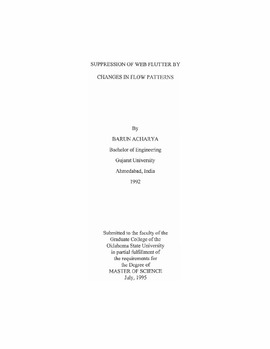| dc.description.abstract | Webs are materials that are manufactured and processed in a continuous-strip form. Web materials include extremely thin plastics, paper, textiles, metals, and composites. Improvements in the paper making technology made it possible the design of paper machines operating at the speeds in excess of 3000.Jpm [1]. However, many paper machines have been operating below their operating capacity (generally 10 to 20% below design speed), because of the problem of web flutter. Web flutter is a serious and a complex problem. It can lead to breaks in paper machines, to register errors in the printing presses, and to damage to the coatings on polymer sheets. The problem of web flutter can occur in a conventional press and dryer section of a paper machine. A schematic representation of air movement in a drier pocket is shown in Figure 1. The dryer fabric and the web approaching the pocket carry on their upper side layers of air. Also, at the ingoing nip and the outgoing nip, negative and positive pressure region are formed which induces air to flow through the fabrics. Furthermore, due to forced pocket ventilation, air flow takes place in the cross-machine direction at point A Web flutter may occur in three modes'- string- mode flutter, edge flutter or combination of both. In the string mode flutter the web behaves like a string between two rollers and is excited by movement of air in the machine direction. In edge flutter, air flow in the cross machine direction causes large amplitude of flutter at tbe free edges. It is necessary to predict the critical operating conditions at which flutter onsets, and how to predict flutter amplitude and web stresses, to operate a machine as fast as possible. In order to increase machine speeds further, new and more effective ways of suppressing flutter, and if possible elimination of the problem of sheet flutter, should be explored. | |
